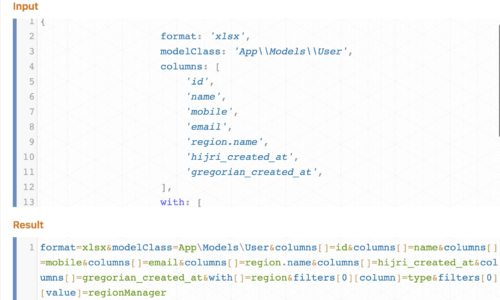- Nady Shalaby
- Agile / Scrum, Definition of Done, Product Owner Role, Project Managment, Scrum Practices, Software Development
- 0 Comments
- 11689 Views
Table of Contents
The role of stakeholders, product owner, team leader and the rest of the team when developing new software project
When developing a new software project, it’s important to understand the role of various team members and stakeholders to ensure a smooth development process and a successful end product. Here’s a summary of the roles typically involved:
Stakeholders: These individuals or organizations have an interest or concern in the project. They can be internal or external to the company. Stakeholders may include clients, users, business managers, and any other individuals who have a vested interest in the outcome of the project. Their role is to provide strategic direction, business requirements, and feedback. They are also involved in accepting (or rejecting) the final product.
Product Owner: In the Scrum framework, the product owner is responsible for managing the product backlog and ensuring the team is working on the most valuable features. The product owner communicates with stakeholders to understand their needs and translate these needs into the product backlog. They prioritize the backlog items and work closely with the team to clarify any doubts. The product owner is also responsible for accepting or rejecting work results in the Sprint reviews.
Team Leader: The Team Leader, often known as the Scrum Master in agile development, is responsible for ensuring that the team follows the chosen development methodology and is able to work efficiently. They facilitate communication, resolve issues, and remove obstacles that might be hindering the team. They do not assign tasks in an Agile team; instead, tasks are self-selected by team members. They are a servant-leader for the team.
The Development Team: The development team is composed of professionals who carry out the work required to deliver the software product. This typically includes roles such as developers, testers, designers, and database administrators. They are responsible for self-organizing to complete the work they have collectively committed to within each iteration or Sprint.
Project Manager: While not always present in Agile environments, in more traditional project methodologies, a Project Manager will have a more prominent role. They would be responsible for planning, executing, and monitoring the project, managing risks, and ensuring the project is delivered on time and within budget.
Quality Assurance (QA) Team: The QA team is responsible for ensuring the product meets specified requirements and customer expectations. They design and execute testing scenarios to identify any potential issues or bugs.
The specific roles and their duties can vary depending on the size of the project, the methodology being used (Agile, Waterfall, etc.), and the organization’s structure.
How to deal with the ideas that always thrown by the business owner
Dealing with numerous ideas from the business owner or any other stakeholder is a common scenario in software development projects. Here are some strategies to manage this:
Establish a Clear Process: Create a clear and structured process for idea submission. This will help organize and prioritize ideas. The Product Owner is usually responsible for managing this process.
Prioritize: Not all ideas can be implemented due to time and resource constraints. Use a system to prioritize these ideas, such as a value vs. complexity analysis or the MoSCoW method (Must have, Should have, Could have, and Won’t have). The priority should be determined based on the business value and alignment with the overall product vision.
Backlog Management: All ideas, after a basic level of validation, can go into the product backlog (a list of features or technical tasks which the team maintains and which, at a given moment, are known to be necessary and sufficient to complete a project or a release). These backlog items can be periodically reviewed and reprioritized.
Regular Communication and Feedback: Keep open lines of communication with the business owner and other stakeholders. Regularly discuss the product progress, the ideas in the backlog, and the reasons for the current priorities. This can help to manage expectations.
Involve them in the Process: Involve the business owner in the Scrum process, such as in the Sprint Review meetings. This can give them a better understanding of the development process, the team’s velocity, and why not all ideas can be implemented immediately.
Product Roadmap: Maintain a product roadmap that aligns with the strategic goals of the business. This can help the business owner understand where their ideas fit into the larger picture and when they can expect their ideas to be implemented.
The goal is not to say “no” to the business owner but to create a shared understanding of what is best for the product considering the current resources, priorities, and market demands.
Some thoughts about product management according to agile best practices and clean scrum methodology:
Product Backlog: It should be prioritized based on factors like business value, cost, risk, and dependencies. The MoSCoW method can be helpful.
Feature Evaluation: Assessing features in terms of Conversion, Acquisition, Retention, and Revenue can be an effective approach to align product development with business goals.
Sprint Goal: Focus should be on delivering a potentially shippable product increment each sprint, rather than limiting the number of modules being worked on.
Backlog Ideas: Ideas can be sourced from across the company, but it’s the Product Owner’s responsibility to manage these ideas and prioritize them in the backlog.
Product Owner’s Role: They have the final say on what features get implemented but should collaborate and consider input from the team and stakeholders.
Product Teams: These cross-functional teams include roles like developers, testers, designers, business representatives, Product Owners, and Scrum Masters.
Definition of Done: It’s a shared understanding within the team about when work is considered complete. It’s used to assess when work on a product increment is done.
KPIs and Metrics: These can vary across teams, but they should align with overall business objectives, be actionable, and accurately reflect the team’s performance.






